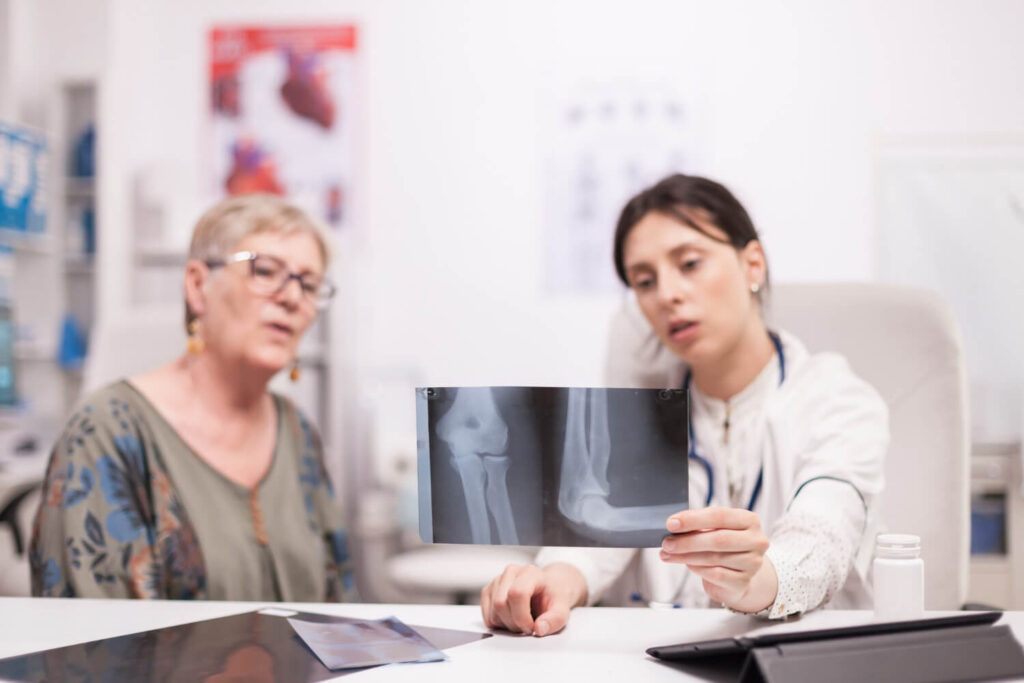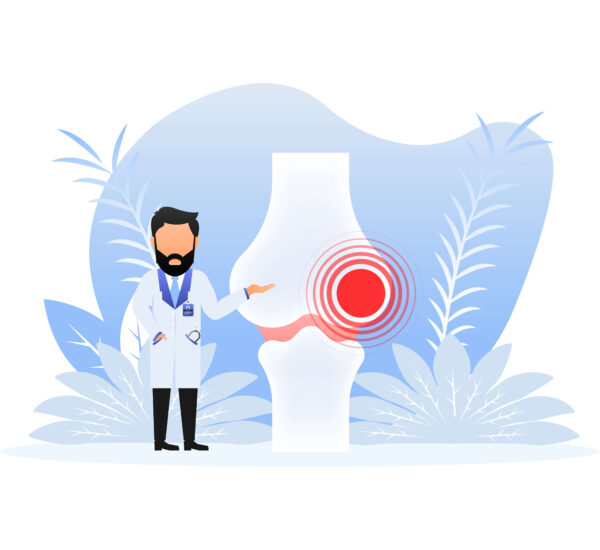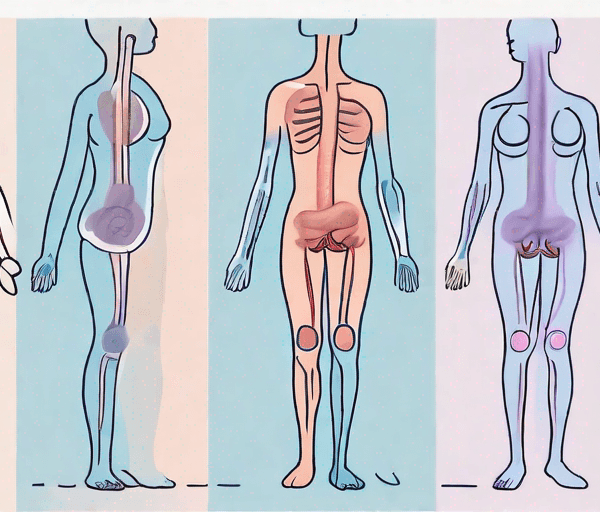Suffering from chronic autoimmune disease such as Rheumatoid Arthritis can be a complex situation to be in. It is an illness that slowly affects healthy tissues, resulting in the decreasing of functionality of the joints.
This condition is known to affect many people worldwide. That means, the need for educational awareness is a must to face the condition head on. In this blog, we’ll give light to the symptoms, causes, and management options to help patients manage this condition. Let’s begin!
Understanding Rheumatoid Arthritis

Rheumatoid Arthritis is not just a simple form of arthritis; it is a systemic autoimmune disease that primarily affects the joints, causing chronic inflammation. Unlike other forms of arthritis, such as osteoarthritis, which occurs due to wear and tear on the joints, RA is caused by the body’s immune system mistakenly attacking healthy tissues, particularly the synovium.
The synovium is a thin membrane that lines the joints and produces synovial fluid, which helps lubricate and nourish the joint. When the immune system attacks the synovium, it triggers an inflammatory response that leads to the characteristic symptoms of RA, including joint pain, swelling, stiffness, and eventually joint deformity.
It is worth noting that rheumatoid arthritis is a chronic condition, meaning that it persists over time and requires ongoing management. The severity of the disease can vary from person to person, with some individuals experiencing mild symptoms while others face more severe complications.
The Prevalence of Rheumatoid Arthritis
When it comes to developing illness, this type of arthritis is more common in women than in men, with the peak age of onset occurring between 30 and 50 years old. However, it can affect individuals of any age, including children and the elderly. This condition knows no boundaries and can impact people from all walks of life.
Having this condition can be challenging, both physically and emotionally. The chronic pain and limitations it imposes on individuals can have a profound impact on their daily activities, relationships, and overall well-being. Therefore, it is crucial to provide support and resources to help individuals manage their symptoms and lead fulfilling lives despite the challenges they face.
Symptoms of Rheumatoid Arthritis
Although this condition commonly affects the hands and feet, it can also involve other joints in the body. Recognizing the symptoms of Rheumatoid Arthritis is essential for early diagnosis and effective management.

Early Signs to Look Out For
The early symptoms of this disease can be mild and nonspecific, often making the diagnosis challenging in the early stages. Joint stiffness, swelling, and pain are common signs that individuals may experience. These symptoms typically affect multiple joints and are usually symmetrical, meaning they occur on both sides of the body.
Aside from joint symptoms, individuals with rheumatoid arthritis may also experience other systemic manifestations.
- fatigue
- low-grade fever
- loss of appetite
- unintentional weight loss.
Progression of Symptoms
If left untreated, this type of arthritis can progress and lead to severe joint damage and disability. Individuals may experience increased joint deformities, reduced range of motion, and difficulty performing daily activities. The inflammation can erode the cartilage and bone within the affected joints, causing irreversible damage.
Over time, the joint deformities can become more pronounced, making it challenging to perform simple tasks such as gripping objects or walking. The reduced range of motion in the affected joints can further limit an individual’s ability to move freely and may result in joint stiffness that lasts for hours in the morning or after periods of inactivity.
Therefore, seeking early medical intervention is crucial to manage the disease effectively and prevent long-term complications. Patients suspectible to early symptoms can engage with a heath professional using online platforms for immediate consultation.
Causes and Risk Factors
Genetic Factors in Rheumatoid Arthritis
Studies have shown that genetics play a significant role in the development of rheumatoid arthritis. Certain genetic markers, such as HLA-DRB1, have been identified as being associated with an increased risk of developing the disease. However, not everyone with these genetic markers will develop RA, indicating that other factors, such as environmental triggers, also play a role.
Lifestyle and Infection Factors
Meanwhile factors such as smoking, exposure to certain infections, and hormonal changes, may trigger the immune response in genetically susceptible individuals. Smoking, in particular, has been identified as a significant environmental risk factor for developing rheumatoid arthritis. Research has shown that smoking increases the risk of developing RA and can also worsen disease severity and treatment outcomes.
In addition to smoking, infections have also been implicated as potential triggers for rheumatoid arthritis. Certain infections, such as Epstein-Barr virus and Porphyromonas gingivalis (a bacterium associated with periodontal disease), have been found to be more prevalent in individuals with RA. It is believed that these infections may activate the immune system and contribute to the development of the disease in susceptible individuals.
Diagnosing Rheumatoid Arthritis

This chronic autoimmune disease primarily affects the joints, causing inflammation, pain, and stiffness. However, not all joint pain can signify rheumatoid arthritis. That’s why, proper diagnosis is a must, which can happen through a series of steps.
Medical History and Physical Examination
When diagnosing rheumatoid arthritis, healthcare professionals will take a detailed medical history and perform a thorough physical examination. They will inquire about the patient’s symptoms, such as joint pain, swelling, and morning stiffness, and assess the duration and pattern of these symptoms.
During the physical examination, the healthcare provider will carefully examine the joints for signs of inflammation, such as warmth, redness, and swelling. They will also evaluate the range of motion and assess for any deformities or nodules that may be present.
In addition to joint assessment, healthcare professionals will also evaluate the patient’s overall health and look for any systemic features associated with RA. These may include fatigue, fever, weight loss, and involvement of other organs, such as the eyes, lungs, or heart.
Laboratory Tests
Laboratory tests play a crucial role in the diagnosis of Rheumatoid Arthritis. Blood tests are commonly used to detect specific autoantibodies that are often present in RA. Two of the most important autoantibodies are rheumatoid factor (RF) and anti-cyclic citrullinated peptide (anti-CCP).
Rheumatoid factor (RF) is an antibody that targets the body’s own antibodies, leading to joint inflammation. Its presence in the blood can indicate the likelihood of RA. Anti-cyclic citrullinated peptide (anti-CCP) is another autoantibody that is highly specific for RA. Its detection can further confirm the diagnosis.
In addition to autoantibodies, other blood tests may be performed to assess inflammation and monitor disease activity. These tests include erythrocyte sedimentation rate (ESR) and C-reactive protein (CRP) levels, which are markers of inflammation in the body.
Imaging Techniques
Imaging techniques, such as X-rays and ultrasounds, are valuable tools in the diagnosis and monitoring of rheumatoid arthritis. X-rays can reveal joint damage, such as erosions and joint space narrowing, which are characteristic of RA.
Ultrasounds can provide a more detailed view of the joints, allowing healthcare professionals to assess for synovitis (inflammation of the joint lining) and detect early signs of joint damage. This imaging modality is particularly useful in detecting joint inflammation in the early stages of RA when X-rays may appear normal.
Regular imaging assessments over time can help monitor disease progression and guide treatment decisions. By comparing images taken at different time points, healthcare professionals can evaluate the effectiveness of treatment and make adjustments if necessary.
Management and Treatment Options
Medications for Rheumatoid Arthritis
Various medications are available to manage Rheumatoid Arthritis and alleviate symptoms. Nonsteroidal anti-inflammatory drugs (NSAIDs) and corticosteroids are often used to reduce pain and inflammation. Disease-modifying antirheumatic drugs (DMARDs) and biologic therapies help suppress the immune response and slow down disease progression. It is essential to work closely with a healthcare professional to determine the most appropriate medication regimen based on individual needs and disease severity.
Lifestyle Changes and Home Remedies
In addition to medications, certain lifestyle changes can help manage Rheumatoid Arthritis effectively. Regular exercise, such as low-impact activities and stretching, can help improve joint flexibility and reduce stiffness. A balanced diet rich in anti-inflammatory foods, adequate rest, stress management techniques, and assistive devices or adaptive aids may also be beneficial in managing symptoms and promoting overall well-being.
Surgical Interventions
In cases where joint damage is severe and significantly affects daily life, surgical interventions may be considered. Joint replacement surgeries, such as total hip or knee replacement, can help restore function and reduce pain. These procedures have shown to be highly effective in improving the quality of life for individuals with advanced Rheumatoid Arthritis.
Conclusion
Managing rheumatoid arthritis requires a multidisciplinary approach involving healthcare professionals and individuals themselves. Ongoing monitoring of disease activity through understanding the causes and symptoms can help patients to move forward to a healthier self.



